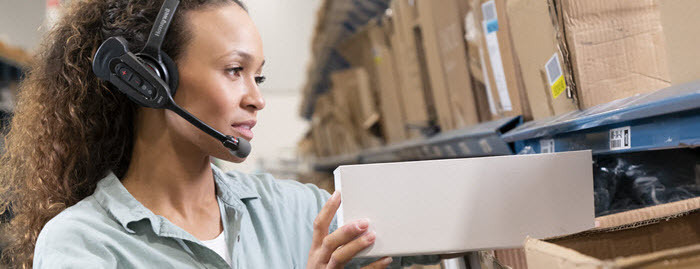Cross-docking: a race where competing gets tougher every day
07 Apr 2022
5 min read
The cross docking market is expected to expand at a rapid pace, with at least 6% by 2030 according to research done by TMR. The drive behind this trend is the increasing importance and dependence on IT, and digitalization within the shipping industry. When expressing this in dollars, we are talking about US$ 342 Bn by 2030 versus~US$ 200 Bn in 2020.
Asia Pacific and South Ameria are anticipated to expand their cross docking services markets at a rapid pace, followed directly by Europe. The rising trade among countries is expected to boost the growth of the market, as well as the increasing focus on customer satisfaction. It is an extremely competitive market, where you can win or lose customers based on their experience.
A serious problem arises when the shipment, wholly or partially, get
lost on the expedition floor. Fortunately, this can easily be prevented
by registering the receipt and movement of these shipments with
RF-scanning. By means of a simple scan action, the transshipment of the
freight can be tracked real-time. Hereby, it is exactly known where the
goods are when loading. Because, obviously, traceability is of great
importance.
What is what and where should it go?
For cross-docking to run like an efficient, well-oiled machine, recognizability of the goods is a must. For you as the logistics service provider, it is not per se necessary to know which goods are on which pallets at transshipment. You probably only want to be able to identify the relevant pallets and where they should be shipped to. This can be achieved by simply using a barcode label. A fundamental condition for the success is that sufficient and correct information is spread throughout the chain. For example, by using EDI (pre-)notifications. For companies that don’t make use of an EDI interface yet, a loading list with pallet numbers and address information via Excel can be a more accessible alternative.
Registration and identification in one hand
With the transshipment of bulk goods from (sea) containers, recognition can be an additional challenge: many pieces are often received from many different items. Typical for this scenario is that it is not physically visible where each individual piece should go. Also, it is not necessarily known in advance on how many pallets (or as how many separate items) the goods will be shipped. This means that a lot of attention and time is spent on identifying and sorting the goods. During receipt, the pallets are assembled. Thereafter, during sealing, they receive a barcode. This way, registration and identification are kept in one hand. The label now contains a unique pallet number and the contact information of the receiving party.
Moreover, if a link is made between a carrier or Transsmart, the registration of a single package can immediately result in the required carrier label.
Loads of elements can be automated during this process. But the fact remains that when there is limited information available beforehand, a lot has to be entered manually. Combine this with the knowledge that there are tens of thousands logistics vacancies worldwide and you are likely to welcome a number of new (relatively unexperienced) employees to your team the coming period. At the same time, your clients’ requirements concerning speed and quality remain the same. Do you want to get your new colleagues up and running as quickly as possible and continue to offer your clients the quality they are used to? If so, then it requires good procedures that can be followed unambiguously. Here lies an opportunity for WMS systems with customized scan procedures and standard functionalities.
What now?
From the above information and our experiences from practice, many hands-on tips come forward. Below, we mention our favorite four.
• A clear location layout. Create a clear location
layout on the cross-dock and ensure that no confusion can arise about
where which goods need to be placed. A successful way is to use zip
code2 boxes instead of one massive cross-dock square.
• Make sure you are on the same page and avoid miscommunications.
Next to a clear division, it is highly recommended to make clear
agreements between all parties involved. The more clarity, the smaller
the chance of errors and thus dissatisfied customers. In particular,
agreements regarding pre-information and scannable goods must be clear.
This way, the registration and identification can actually go hand in
hand.
• Place label printing stations on a practical location.
Goods often come out of the container unlabeled. This might seem
difficult at first sight, but this can be solved easily by placing label
printing stations directly at the dock. This increases the traceability
and accelerates the registration. This way, you kill two birds with one
stone.
• Give customers real-time insight. Finally, it is advisable to provide the customer with real-time insight into the progress. This can be achieved easily by enabling the web portal in the right way.
This option tackles possible customer questions, increases convenience
and leaves your organization more time for other activities.
By applying these tips, you will notice that the error margins will reduce significantly and your processes will run smoother. In this way, the labor shortage becomes a lot less problematic and keeping up seems more realistic. That way, you too can become king in cross-docking.







